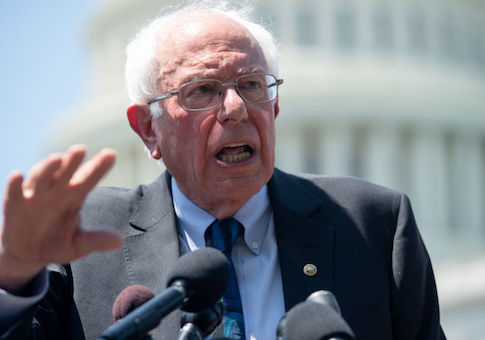Sen. Bernie Sanders (I., Vt.) on Monday became the second 2020 presidential contender to propose mass student debt forgiveness for America’s 45 million borrowers.
Sanders's proposal would also create free public colleges, universities, and trade programs. It would void or otherwise repay $1.6 trillion in outstanding student debt, roughly 80 percent of which is held by the federal government.
Sanders will introduce legislation to enact his proposal alongside House counterparts Rep. Ilhan Omar (D., Minn.) and Pramila Jayapal (D., Wash.), the Washington Post reports.
https://twitter.com/Ilhan/status/1143179632386220034
With this proposal, Sanders goes further than colleague and 2020 opponent Sen. Elizabeth Warren (D., Mass.), who proposed a plan in April to void $1.25 trillion in student debt. Warren's plan is capped, not granting any debt forgiveness to families earning more than a quarter of a million dollars a year; Sanders's, by contrast, has no such cap.
Unsurprisingly, college debt tends to accrue most among those with college degrees, who collectively enjoy a substantial premium in lifetime earnings compared to their non-graduate peers. According to the Urban Institute, just 12 percent of borrowers are in the lowest income quartile compared to 34 percent in the highest quartile of earners; 76 percent of debt is held by either college grads or those with advanced degrees.
Consequently, millionaire socialist Sanders's plan is likely to disproportionately benefit the well off, more so even than Warren’s capped proposals. In its announcement of the plan, his campaign addressed this issue by noting that "73 percent of the benefits of cancelling all student debt go to the bottom 80 percent of Americans who are making less than $127,000 a year," while "nothing" goes to "the top one-tenth of one percent."
In addition to cancelling all student debt, the Sanders plan expends $48 billion per year to "eliminate tuition and fees at four-year public colleges and universities, tribal colleges, community colleges, trade schools, and apprenticeship programs." It would also expand Pell grants to low-income students and guarantee cost-free college attendance for families making less than $25,000 per year, cap student-loan interest rates, expand work-study programs, and invest in historically black colleges and universities.
The Sanders campaign did not provide an estimate of how much his plan would cost; the cost for Warren's was an estimated $640 billion. Sanders's campaign did say the plan would be covered by a financial transactions tax, charging 0.5 percent on stock trades, 0.1 percent on bond trades, and 0.005 on derivative trades. In sum, the campaign projects raising $2.4 trillion off the plan over the next ten years, or $240 billion per year.
